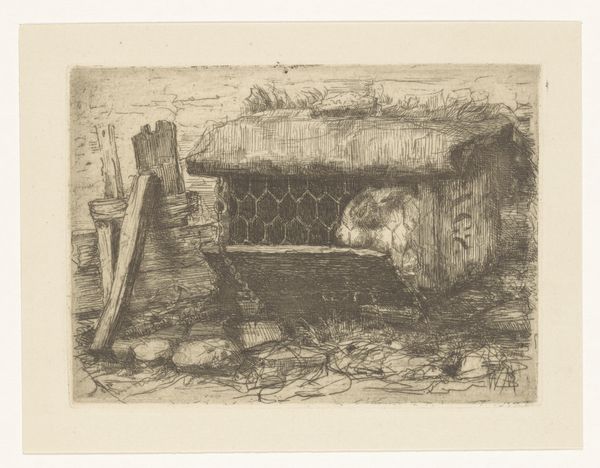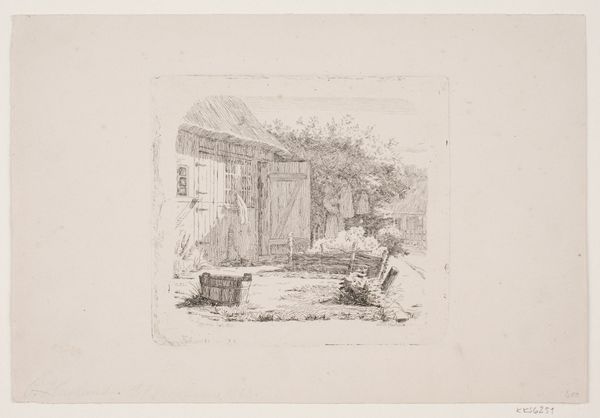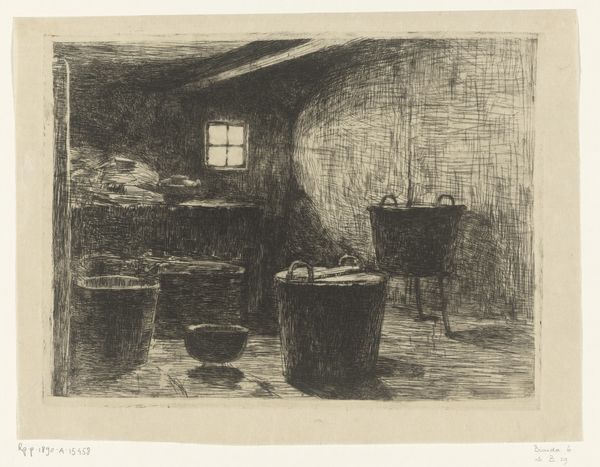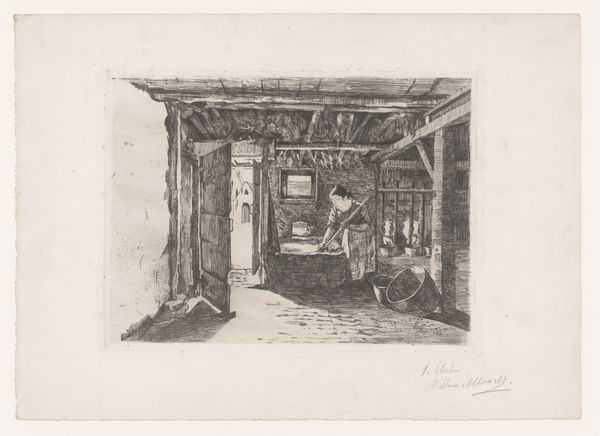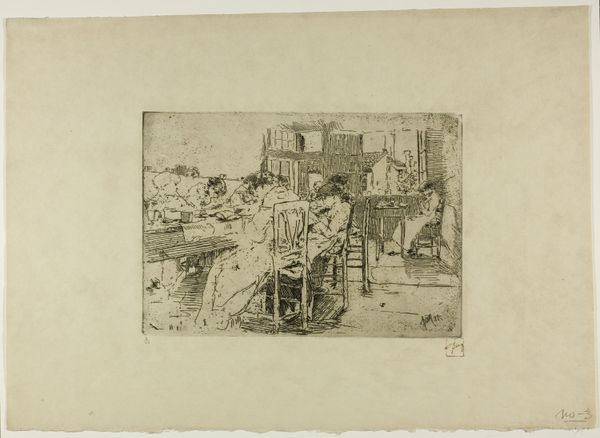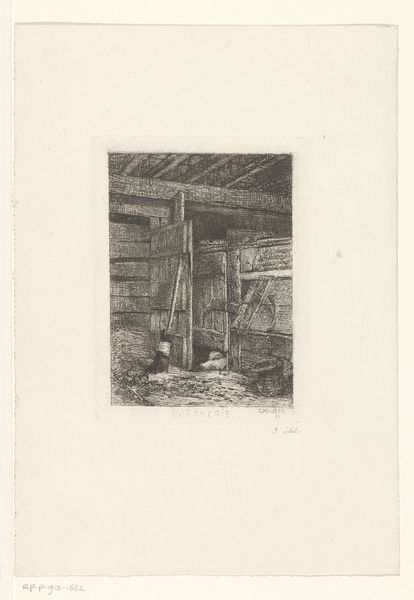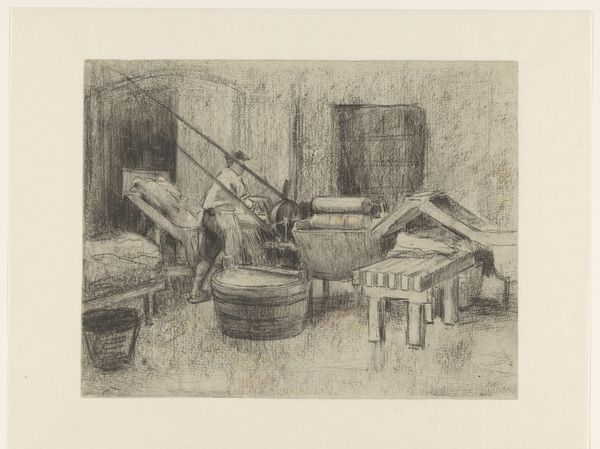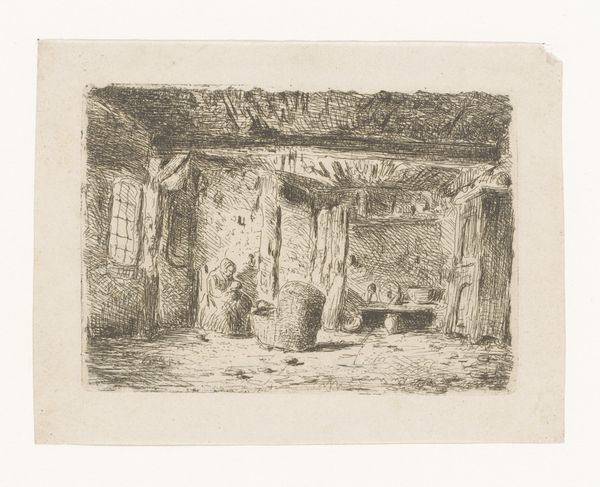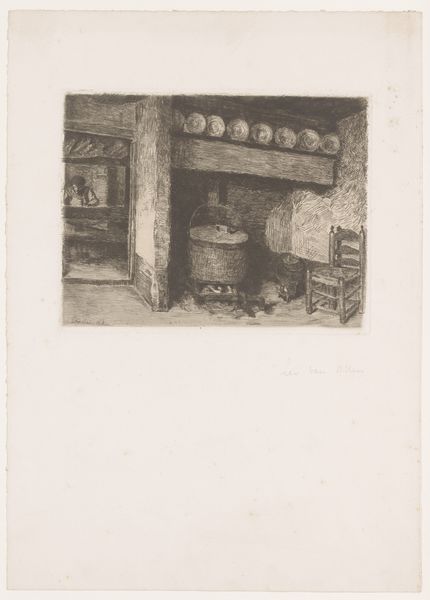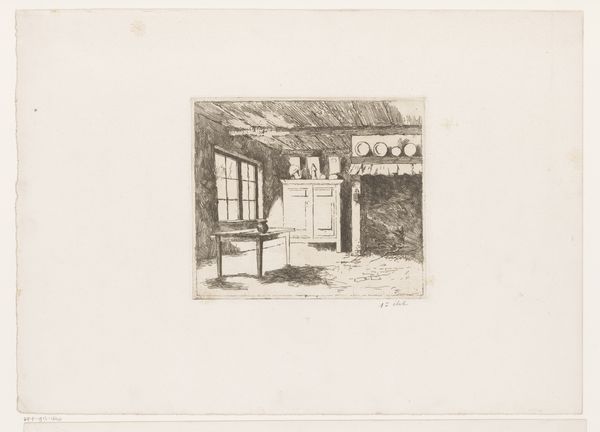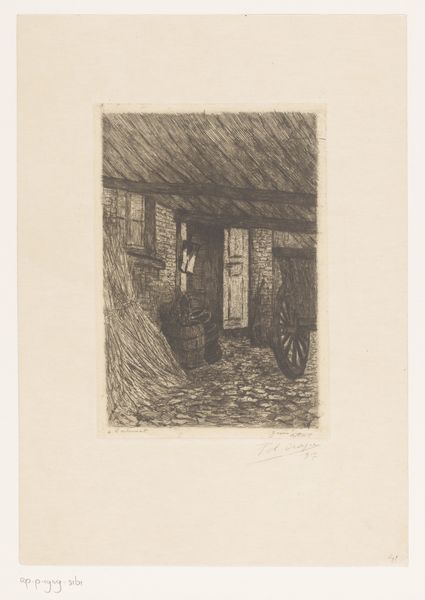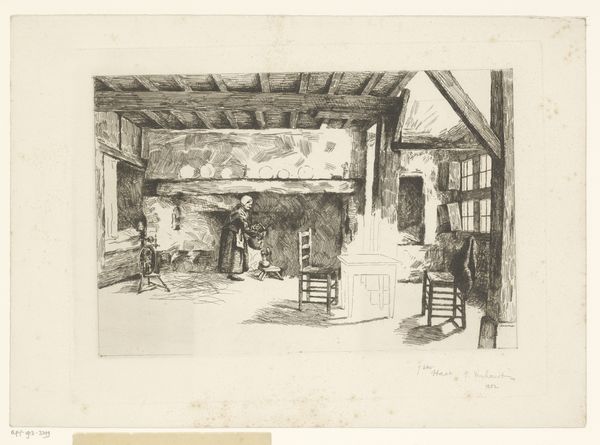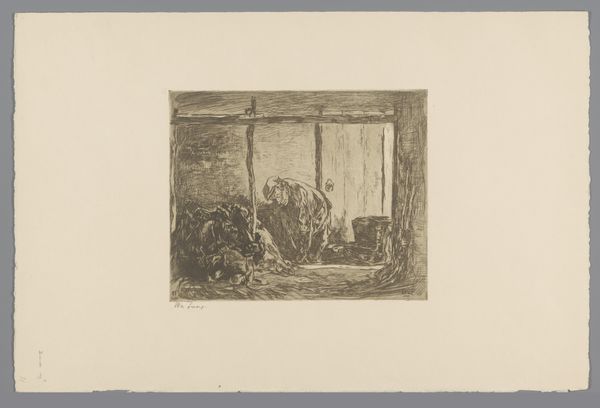
drawing, print, etching
#
drawing
# print
#
etching
#
landscape
#
realism
Dimensions: height 118 mm, width 207 mm, height 243 mm, width 360 mm
Copyright: Rijks Museum: Open Domain
Curator: This etching by Anna Elisabeth Batelt, titled "Waterput," which translates to "Well" was created before 1913. It depicts a rather commonplace subject: a well in front of a building. Editor: It's quiet, isn't it? The somber shading and tight focus make it feel strangely intimate, as though you are sharing the weight of its construction. Look at the varying shades, there, on the brick, they highlight just how roughly this was built, each brick hewn and mortared with hard labor. Curator: That's an interesting observation. Realism was very influential then, but this feels…less grandiose. Perhaps it’s meant to highlight the everyday experiences of the people who rely on this well, or maybe the slow creep of modern technologies to come that will end the water well era of life. Editor: Perhaps. Note the layered materials in the structure itself. The rough, uncut stone of the well contrasting with the worn timber supporting the pulley mechanism. It's about the hands that shaped it. Even the building in the background shows the thatch roof sitting precariously upon the brickwork—these materials show how rural labor makes something enduring with whatever is available. Curator: That also speaks to its societal value, doesn't it? Who maintains it? Is it privately owned, or a communal resource? The well becomes a locus for examining broader community and economic systems. Editor: Precisely. I mean, notice the stone-paved floor—a significant effort compared to bare earth! I see the hand of individuals shaping a functional world, revealing how ordinary infrastructure silently structures community bonds and economies. Curator: It invites consideration of water’s central importance, something easily forgotten today with running water seemingly always available. The image provides a window onto the past, prompting thought about labor and its cultural position. Editor: Indeed. A seemingly simple depiction opens a portal into examining human innovation and dependence on locally accessible materials. The means, methods and hands engaged, they all matter here, in the making and the maintenance.
Comments
No comments
Be the first to comment and join the conversation on the ultimate creative platform.
